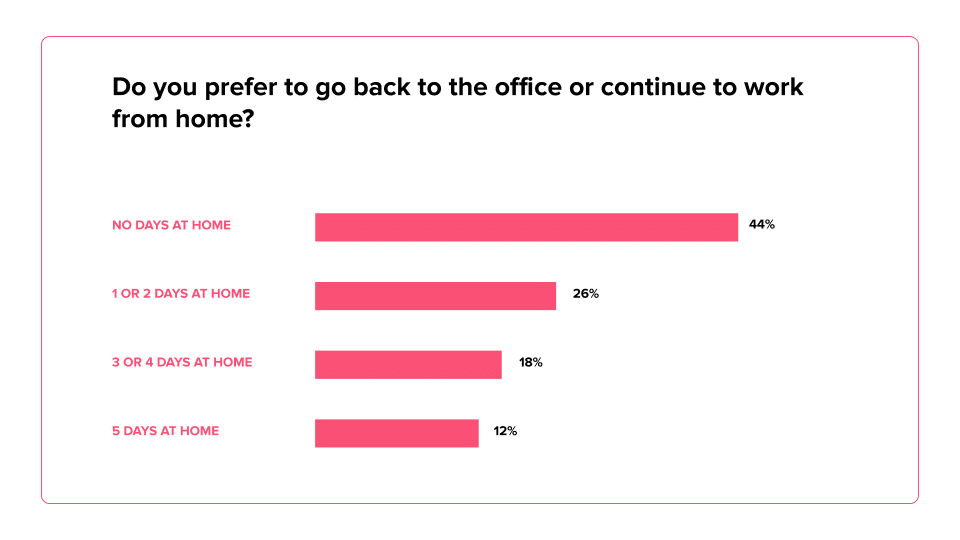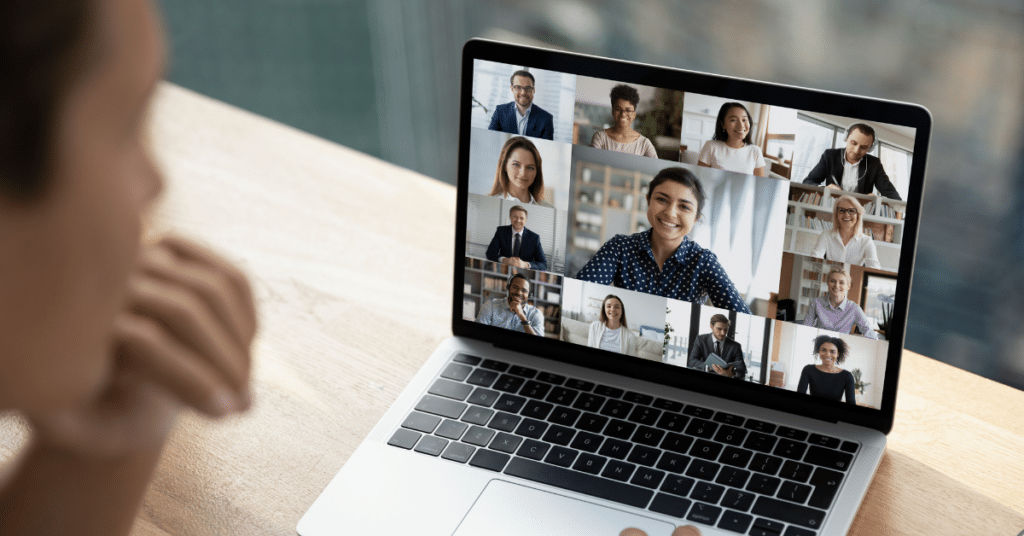There’s a whole lot of talk about what life will look like when we “go back to work” post-COVID. But for those of us who have been fortunate enough to keep our jobs, we’ve been working this whole time—often with a child on our lap or while sharing the kitchen table with our roommate.
Overnight, a global pandemic has forced us to take everything we did at the office and figure out how to do it at home. And as much as we’re all wishing away this totally bizarre time and craving a “return to normal,” the truth is that day will never come.
Offices look a lot different these days. Desks are farther apart, amenities are gone, and employees are wearing masks while they transition back to working in-person. But much more importantly—and something that’s not mentioned enough—is that we as people are different, too.
After months in quarantine, we’ve adapted. The tech-first world we’ve always talked about is here, and in a span of a few months, we got the digital transformation we’ve always been working towards.
We know how to connect with our coworkers online. We’ve figured out how to get stuff done while sitting on our couch in pajamas. And if you’re like us here at Jellyvision, you’ve figured out how to host a totally virtual (but still amazing) summer party:
And ultimately, spending this much time at home means that our needs and priorities are shifting, too.
This is a turning point for how we work together. And at Jellyvision, we’re fundamentally rethinking what the future of our workplace looks like—based not on what we’ve always done or what we think will work, but what we’re learning from our current situation. Here’s where we’re headed.
We’re just as productive at home
We ran a Jellyvision staff survey to find out how our employees are feeling about returning to the office. And it confirmed something we were already starting to realize right before COVID-19 hit: employees don’t need an office space to be productive.
81% of respondents said they’re at least as productive working at home as they were in the office, and 68% said they wouldn’t want to come back to the office right now even if we followed CDC guidelines.
A recent study by Gensler Design shows similar trends on a national scale. Most folks don’t want to go back to the office full-time. There’s a range of preferences, but many fall somewhere in the middle—44% want to spend anywhere from one to four days working remotely.

That insight was a huge tipping point for our leadership team. If employees want to work from home, and they’re just as productive—then why do we have an office in the first place?
But we do miss one thing about the office
Employees are telling us that there is one important reason they’d be compelled to come back to a shared workspace. By a landslide, what our staff misses most is casual interactions with colleagues.

Similarly, Gensler’s research shows that people are the main reason employees want to come back to the office, and that a shared workspace’s biggest value is that it allows people to socialize.
And all this is no surprise to anyone—of course, we’re missing our people while we’re stuck at home talking to our plants. But it does give us a really important insight about what the workplace of the future could look like. If an office’s main role isn’t to help us be more productive, or access technology, or get free snacks—then maybe it’s the place where we connect.
The new purpose of the workplace will be to build community, reinforce culture, promote a shared mission, and strengthen our relationships with each other. And Steph Yiu at WordPress agrees that those goals can be achieved outside of the traditional 9-to-5 office structure.
What our employees really want and need is flexibility. Forcing folks to chain themselves to an office desk for eight hours a day, five days a week isn’t what’s best for them—or for our company.
Introducing “Flexible First”
So how does all of this data inform our plans for the future here at Jellyvision? Well, this current moment presents a huge opportunity to redefine not just where we work, but how we work.
That’s why we’re implementing a new “Flexible First” model. “Flexible First” means that as soon as we’re able to safely share a workspace again, we’ll embrace a hybrid model that allows employees to work remotely as often they’d like, while making the office a place for collaboration, community and teambuilding.
This model is all about transforming the office from a place employees have to come to a place where they want to come. Gensler compares it to going to a restaurant. You don’t go out to eat because there’s no food at your house—you go because you want an experience, or a dish you couldn’t get at home, or the stress relief that comes with not having to cook that night.
So we’re striving to make Jellyvision’s workplace that figurative restaurant: a destination where employees are inspired to go, only on the days and times when it will help them be the most productive.
What will a “Flexible First” office space look like? We’ll focus our design on community and collaboration, with breakout rooms, conference spaces and common areas. There will also be some individual workspaces or hotspot tables so that people can come in and work independently if they’d like. And we might have less space since we won’t have as many people in the office at once—but our goal is to make more effective use of the space we do have, by accommodating employees’ desire to engage with each other.
And outside of our physical office, we’ll continue to embrace what’s worked while we’ve been remote. For example, one of the most interesting things we’ve seen since our office has been closed is that our all-team meetings have higher engagement scores and more employee involvement than they did before.
Steven Perry, VP of Technical Communications for Arcadis, observes that this might be because video conferencing is more accessible: “Giving everyone a camera—the same equipment, the same access—it’s a great equalizer. Our little video chat windows on a screen are not stacked by org chart; they aren’t organized in some preconceived cultural way.”
Sam Pessin, Remote Year’s COO, agrees: “Early in our journey, we created the ‘All or Nothing Rule,’ which basically means either everybody’s in person or everybody’s on Zoom. We’ve all been the one person on the conference call with everyone else in a room, and realized it’s so hard to engage, let alone sometimes to hear. So we made this rule really early on where everybody is on their own computers.”
So we’re looking at how we can continue to provide equal access to those important company meetings, and encourage higher engagement. We’re also reviewing our existing amenities and benefits offerings to explore how they can better support employees wherever they might be working.
This shift will not happen at the drop of a hat. Thanks to the pandemic, we won’t gather in person for several more months, and we’re continuing to learn what’s best for Jellyvision and for our employees. But we’re encouraged to hear that this workplace reinvention is spreading, and other business leaders are exploring a community-based approach, too:
This new “Flexible First” model is not only about changing where we are physically. It’s about embracing a new way of working—by combining the best parts of who we were before COVID-19 with who we are now. It’s about recognizing just how much we’ve changed, and how different our needs and priorities are. And ultimately, it’s about transforming our culture to fully reflect what our employees and our company need to succeed.


